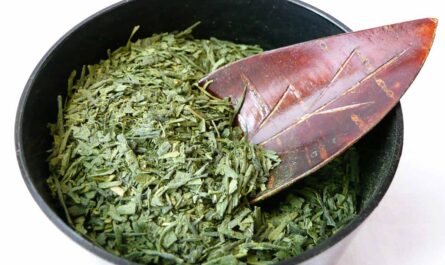What are some notable disadvantages of drinking tea in paper cups? In the relentless cadence of modern existence, tea has seamlessly entrenched itself into the fabric of our daily rituals, offering a soothing refuge from the incessant demands of the day. Yet, the vessel chosen to cradle this age-old elixir transcends mere practicality. Despite the apparent convenience, the unassuming paper cup—a ubiquitous companion to tea enthusiasts—veils an intricate tapestry of drawbacks that extend beyond the brief joy derived from a comforting sip.
Proven Disadvantages of Drinking Tea in Paper Cups
While the undeniable convenience of paper cups has solidified their place in the realm of tea consumption, the multitude of disadvantages they harbor cannot be dismissed. From the severe environmental repercussions to compromised sensory experiences, these pitfalls underscore the pressing need for a more thoughtful and sustainable approach to the cherished ritual of tea drinking. As society grapples with the implications of disposable culture, it becomes imperative to seek alternatives that not only preserve the joy of tea but also align with the growing awareness of environmental responsibility. Here are some disadvantages of drinking tea in paper cups:
1. Environmental Conundrum
Eclipsing the surface allure of paper cups is an environmental conundrum that demands urgent attention. These seemingly innocuous vessels play a pivotal role in the escalating predicament of deforestation and the broader depletion of precious natural resources. The production lifecycle, marked by the indiscriminate felling of trees and energy-intensive manufacturing, poses an imminent threat to the delicate equilibrium of our intricate ecological system, sounding an alarm for sustainable alternatives.
2. Chemical Leaching
Beneath the veneer of convenience, paper cups harbor a less conspicuous yet equally significant concern—chemical leaching. While ostensibly designed to prevent leaks, these vessels often conceal a subtle plastic lining. Exposed to the heat of freshly brewed tea, this clandestine layer may surreptitiously release harmful substances, infiltrating the very essence of the beverage meant to offer solace and rejuvenation. This insidious element of contamination introduces a shadow over the seemingly innocent act of enjoying a cup of tea.
3. Temperature Woes
The quest for the perfect brew hinges on an optimal temperature for aficionados of the tea ritual. However, the very vessels chosen for the elixir, in this case, paper cups, betray this quest. Their inadequacy as insulators renders them incapable of preserving the desired warmth, thereby not only jeopardizing the nuanced flavor of the tea but also ushering in a disheartening and tepid drinking experience.
4. Insipid Aesthetics
Tea, as an experience, transcends the mere satisfaction of taste; it unfolds as a visual symphony, a choreography of rich hues and ethereal swirling steam that adds an exquisite layer of delight to the entire ritual. Regrettably, the paper cup, with its bland and lackluster appearance, emerges as an unwitting antagonist to this visual poetry. Stripping away the pleasure derived from witnessing the intricate dance of tea leaves or savoring the subtle interplay of colors, it acts as a desensitizing agent, robbing the tea-drinking ritual of the artistic essence that elevates it beyond a mundane act.
5. Flimsy Construction
In the relentless pursuit of convenience, vessels often fall victim to the sacrifice of inherent practicality, and paper cups are no exception to this compromise. Their intrinsic flimsiness renders them susceptible to the heat and weight of the tea they cradle, resulting in unforeseen spills and chaotic encounters. The fragility embedded in these vessels introduces an unwelcome element of unpredictability into the ostensibly simple act of enjoying tea, transforming what should be a moment of solace into an inadvertent challenge, where the very vessel becomes a precarious partner in the experience.
6. Limited Size Options
A hallmark of the refined tea-drinking experience lies in the realm of customization, where personal preferences dictate the nuances of the brew. However, the ubiquitous paper cup disrupts this delicate balance with its standardized sizes, imposing an unwelcome homogeneity. For connoisseurs meticulously fine-tuning their tea-to-water ratio or those desiring varied quantities to suit their palate, the one-size-fits-all ethos becomes a confining constraint, diminishing the potential for a truly personalized and tailored indulgence.
7. Impact on Taste
The subtleties of tea, delicately balanced between various notes and flavors, can be significantly influenced by the vessel that cradles it. In the case of paper cups, their inherently porous nature becomes a silent participant in the tea-tasting symphony. The potential for these cups to impart a subtle papery flavor to the beverage poses a risk of altering its intended taste profile. Thus, the very vessel meant to enhance the tea-drinking experience inadvertently introduces an uninvited nuance that can subtly compromise the nuanced flavors of the brew.
8. Inadequate Lid Sealing
In the endeavor to prevent spills and enhance portability, paper cups are adorned with plastic lids. However, the sealing mechanism embedded in these lids often falls short of optimal efficacy. Resulting in frequent leakages, this inadequacy not only undermines the overall drinking experience but also introduces an element of hazard. The risk of unintended spills goes beyond mere inconvenience, as it poses a tangible threat of accidental burns, thereby complicating the act of enjoying tea and transforming it into a potentially perilous undertaking.
9. Disintegration Over Time
The temporal dimension of tea consumption unveils an unexpected vulnerability in paper cups. Prolonged exposure to the steaming liquid within can trigger a gradual process of disintegration, leaving the tea enthusiast grappling with a collapsing vessel. This structural breakdown, occurring over time, injects an unwarranted layer of inconvenience into the seemingly simple act of savoring tea. As the cup succumbs to the relentless influence of heat and moisture, the once-sturdy vessel metamorphoses into a source of frustration, detracting from the intended tranquility associated with tea-drinking rituals.
10. Limited Reusability
Amid the prevailing ethos of sustainability, the inherent disposability of paper cups becomes a subject of concern. Their single-use nature, though convenient in the short term, raises eyebrows in the face of the escalating global waste crisis. Beyond contributing to environmental degradation, the disposability of these cups contradicts the burgeoning awareness surrounding responsible consumption. The reluctance to embrace reusable alternatives diminishes their potential to serve as conscientious custodians of the environment, highlighting a missed opportunity for a more sustainable tea-drinking culture.

11. Cultural Detachment
Tea, steeped in tradition and ceremony across various cultures, transcends its identity as a mere beverage. It becomes a symbol, a cultural touchstone embodying centuries of customs and societal nuances. Paper cups, however, sever this cultural umbilical cord with a swift stroke, relegating a profound and historically laden ritual to the mundane routine of a disposable vessel. In this act of detachment, the paper cup transforms the culturally rich tapestry of tea drinking into a threadbare, soulless routine, devoid of the historical and social significance that once infused each sip with profound meaning.
12. Cost Considerations
The apparent affordability of disposable paper cups, when viewed through an individual lens, belies a more nuanced economic reality. The cumulative expenditure incurred by consistently purchasing these single-use vessels becomes a noteworthy concern. In the broader scope, the financial toll of this seemingly economical choice accumulates over time. A more farsighted and economically prudent approach advocates for an investment in reusable alternatives. Not only does this choice align with sustainable practices, but it also underscores the wisdom of long-term financial prudence, mitigating the persistent and escalating costs associated with disposable consumption.
13. Limited Material Innovation
The contemporary pursuit of sustainability propels the exploration of alternative materials for beverage containers. However, the prevalent usage of paper cups acts as a hindrance to the evolution and adoption of more environmentally friendly options. This inertia stifles progress in the domain of eco-conscious packaging. The persistent reliance on traditional paper cups impedes the development and integration of innovative, sustainable materials, thereby limiting the scope for material evolution in the pursuit of eco-friendly alternatives. In embracing change, the beverage industry could potentially catalyze a shift toward more responsible and progressive packaging solutions.
14. Incompatibility with Certain Teas
The diverse world of tea, replete with a spectrum of varieties, each boasting unique flavors and characteristics, demands a tailored approach to enhance the enjoyment of each brew. However, the generic nature of paper cups proves incompatible with this nuanced landscape. Delicate teas, exemplified by the likes of green or white tea, bear the brunt of this incompatibility, as the limitations of a paper cup can easily overshadow or alter their subtle and intricate flavors. The vessel meant to be a conduit for enjoyment becomes a restrictive medium that compromises the essence of these delicate teas.
15. Inconsistent Brewing
The pursuit of the perfect cup of tea entails a delicate dance between time and temperature, a precise orchestration to unlock the full spectrum of flavors. Unfortunately, paper cups, with their intrinsic inability to consistently retain heat, disrupt this intricate choreography. The consequences unfold as uneven and suboptimal brewing outcomes, wherein the delicate balance required for a nuanced and flavorful cup of tea is compromised. This inconsistency introduces an unwarranted element of unpredictability into the art of brewing, hindering the realization of the tea enthusiast’s quest for a consistently gratifying experience.
16. Compromised Aroma
In the intricate tapestry of the tea-drinking experience, aroma serves as a vital thread, weaving together the sensory pleasure accompanying each sip. Regrettably, the porous nature of paper cups acts as an inadvertent conduit for the escape of aromatic compounds. This escape diminishes the olfactory pleasure that should ideally envelop the act of sipping a steaming cup of tea. The fragrant symphony intended to accompany the tea aficionado’s journey is compromised, with the very vessel chosen for convenience becoming a silent thief robbing the ritual of one of its most enchanting dimensions.
17. Limited Artisanal Tea Experience
For those who derive joy from the artisanal side of tea preparation, the constraints imposed by paper cups are stifling. The inability to witness the graceful unfolding of tea leaves or partake in elaborate brewing rituals introduces a palpable limitation. This restriction significantly diminishes the overall satisfaction derived from the tea preparation process. The paper cup, in its utilitarian simplicity, truncates the potential for a rich and immersive artisanal experience, reducing the act of tea preparation from a form of artistic expression to a perfunctory routine.
18. Packaging Waste
The ecological footprint of tea consumed from paper cups extends beyond the cups themselves to the realm of packaging and labeling. The excessive use of ink, plastic stickers, and additional materials intensifies the burden of waste. The ostensibly simple act of enjoying tea from a paper cup becomes an unwitting contributor to an escalating environmental challenge. The mounting packaging waste, laden with synthetic elements, underscores the hidden toll exacted by the disposable nature of these cups, urging a reevaluation of their environmental impact.
19. Absence of Insulation
Tea, cherished for its warming embrace, becomes a sought-after companion during colder seasons. However, the inherent lack of insulation in paper cups undermines this fundamental attribute. The consequence is a compromise in the tea-drinking experience, leaving the enthusiast with a tepid and less gratifying sip during chilly weather. The absence of insulation transforms what should be a comforting ritual into a less-than-ideal experience, highlighting a crucial deficiency in the design of paper cups for those seeking warmth and solace in their tea during colder climates.
20. Hygiene Concerns
The porous nature of paper cups, coupled with their disposable nature, raises a critical flag regarding hygiene. This inherent porosity makes these cups susceptible to the infiltration of bacteria and contaminants. For unsuspecting tea enthusiasts who prioritize the convenience of disposable cups, the potential health risks cannot be ignored. The very vessel chosen for its practicality becomes a potential breeding ground for unseen threats, urging a reconsideration of the trade-off between convenience and health considerations in the tea-drinking ritual. Tea, Coffee, Energy Drinks, Juice, Beverage, Smoothie, and more
21. Overlooked Social Connotations
The choice of a vessel for tea consumption extends beyond personal preference; it carries subtle yet powerful social connotations. Opting for disposable paper cups may inadvertently signal a lack of mindfulness towards environmental concerns. In social circles that increasingly prioritize eco-consciousness, this choice might influence perceptions. The act of choosing a disposable cup becomes a silent statement, potentially conveying a disconnection from the broader environmental discourse. This overlooked social nuance underscores the interconnectedness between individual choices and collective environmental consciousness.
Other Interesting Articles
- 20 Benefits of Drinking Tea Before Breakfast, Side Effects
- 21 Honeysuckle Flower Tea Health Benefits, and Side Effects
- 22 Benefits of Drinking Hot Tea After A Meal, Side Effects
- 22 Lemon Tea Health Benefits, Nutrition, Recipes, Side Effects
- 20 Benefits of Drinking Tea with Milk and Sugar, Side Effects
- 19 Olive Leaf Tea Health Benefits, Nutrition, Recipes, Effects
- 15 Mint Tea Health Benefits, Nutrition, Recipes, Side Effects
- 20 Common Disadvantages and Side Effects of Drinking Tea
- 17 Pumpkin Spice Tea Health Benefits, Nutrition, Side Effects
- 21 Health Benefits of Drinking Tea with Milk without Sugar
- 17 Bush Tea Health Benefits, Nutrition, Recipes, Side Effects
- 20 Benefits of Drinking Tea in the Afternoon with Weight
- 14 Mamaki Tea Health Benefits, Nutrition, Recipes, Side Effects
- 20 Amazing Health Benefits of Drinking Tea in the Afternoon
- 12 Yerba Mate Tea Health Benefits, Nutrition, Side Effects
- 22 Benefits of Drinking Tea in the Evening with Cinnamon
- 16 Turmeric Tea Health Benefits, Nutrition, Side Effects
- 23 Health Benefits of Drinking Tea in the Evening with Ginger
- 14 Chrysanthemum Tea Health Benefits, Nutrition, Side Effects
- 20 Health Benefits of Drinking Tea in the Evening with Lemon




